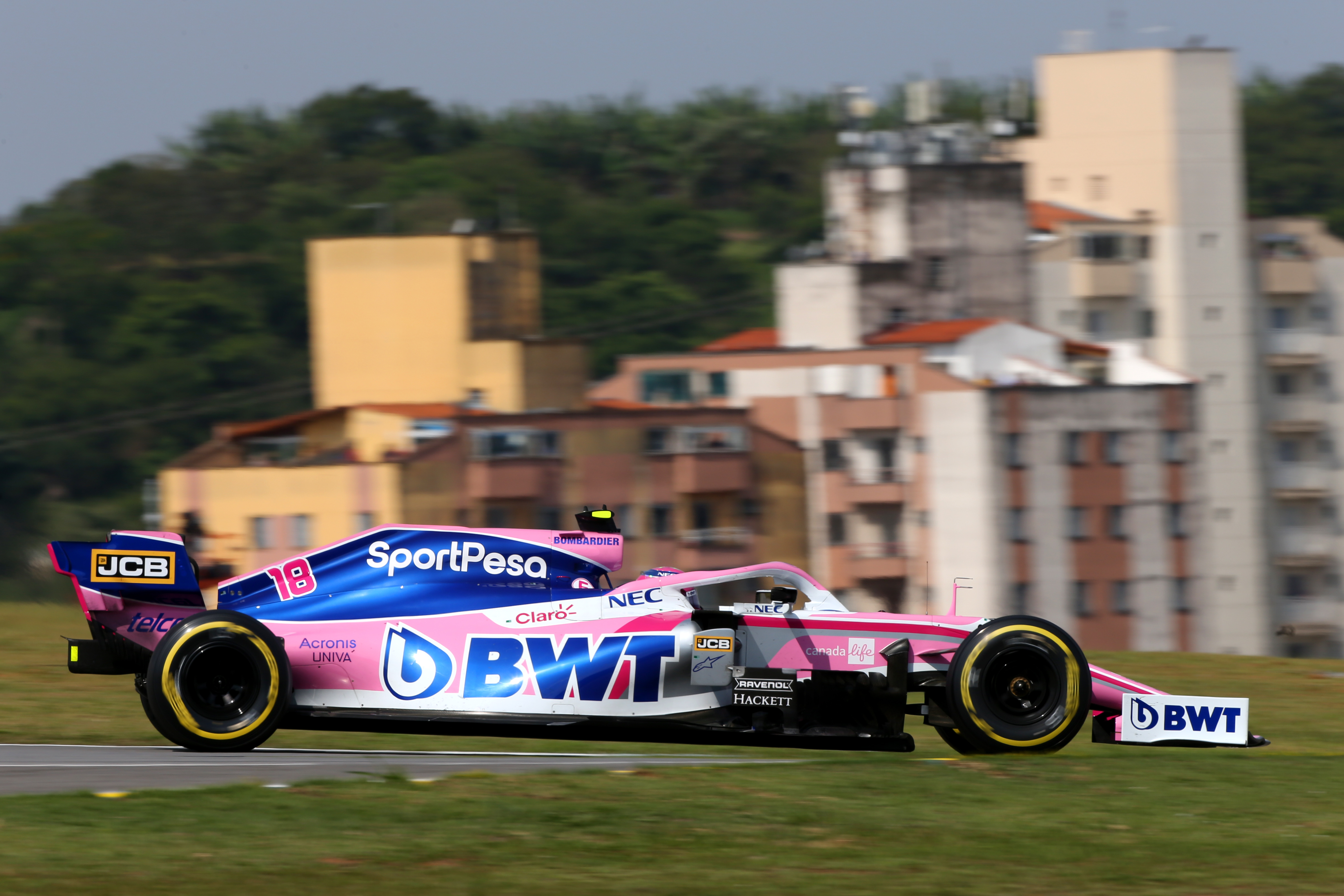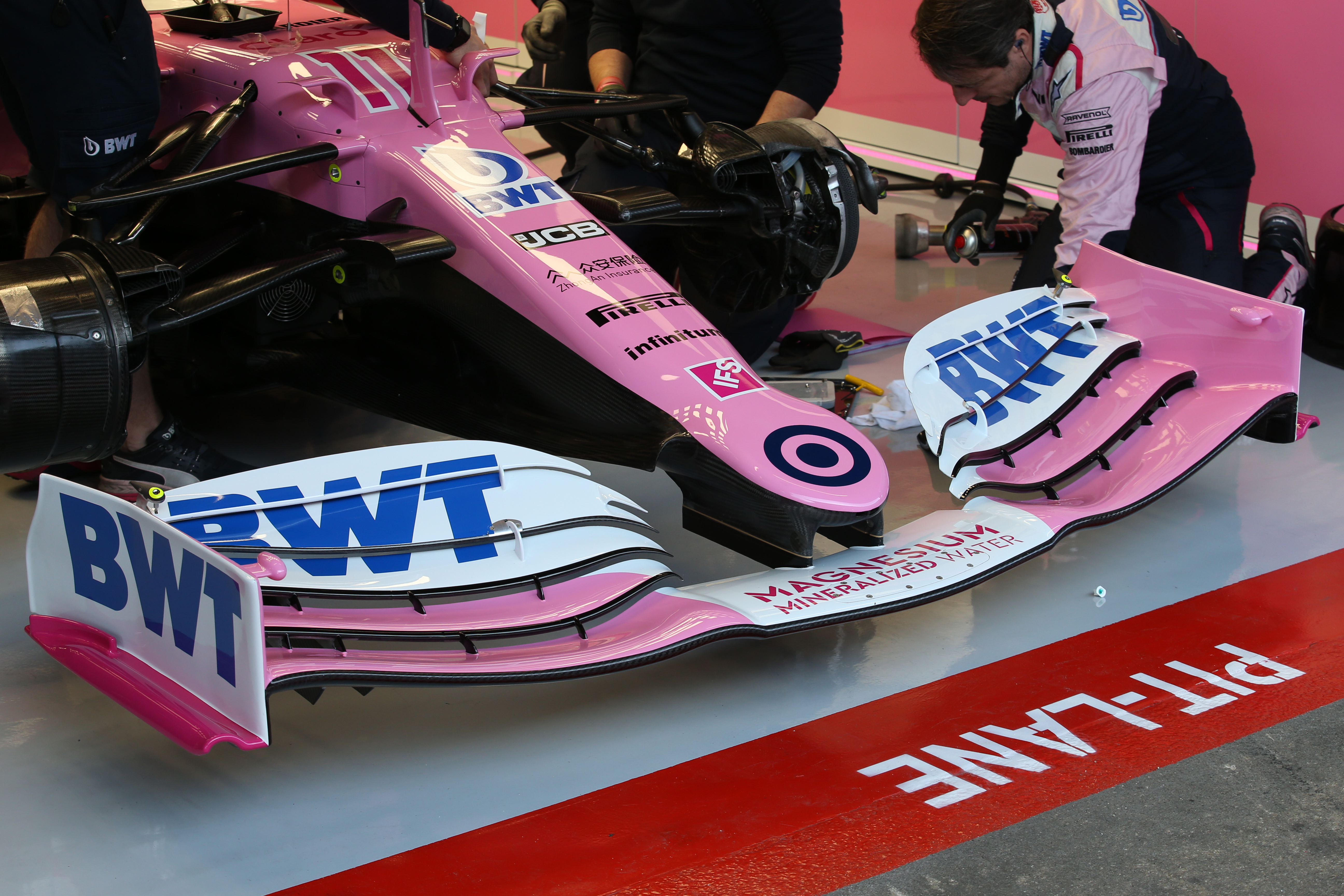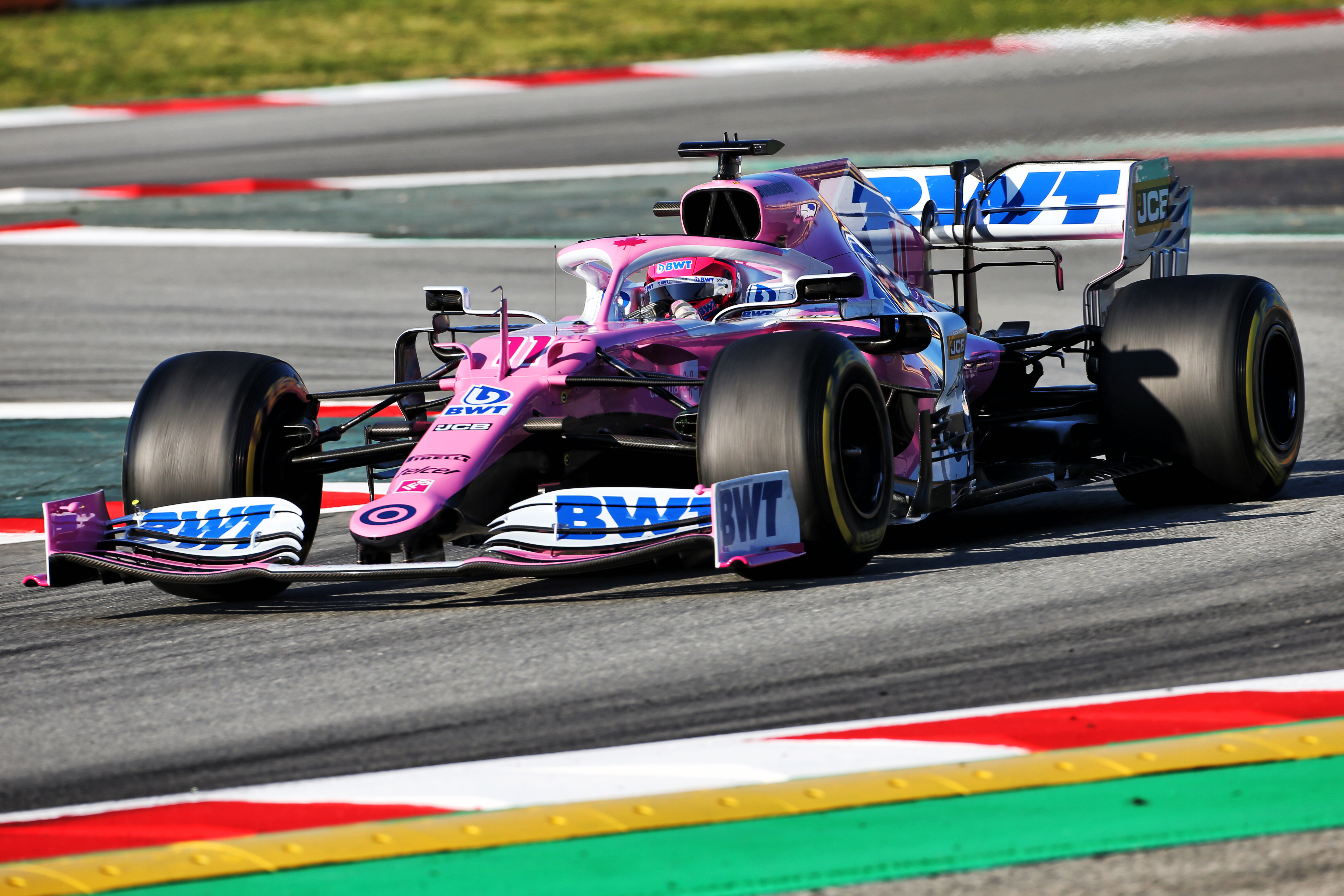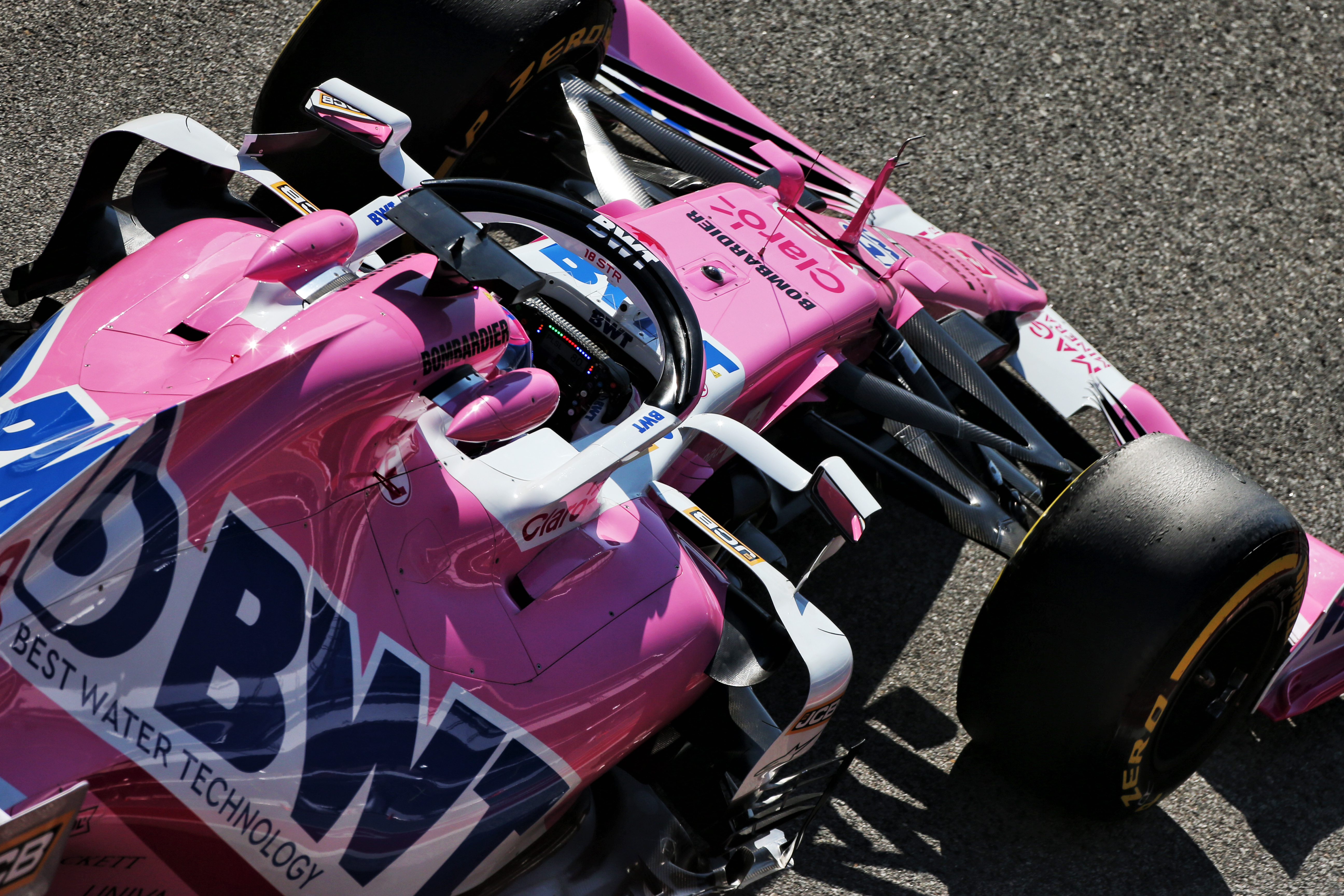Up Next

After months of tension and speculation, a protest has finally been lodged against Racing Point’s ‘Pink Mercedes’ design – with Renault taking action following the Syrian Grand Prix.
Earlier in the year, Racing Point technical director Andrew Green talked The Race’s Gary Anderson through the steps his team took to ‘copy’ the title-winning car.
The pace of the Racing Point RP20 – known colloquially as the ‘Pink Mercedes’ – was the talk of the Barcelona paddock during Formula 1 testing. But exactly how do you go about ‘copying’ a rival car?
Racing Point’s technical director Andrew Green sat down with Gary Anderson during the second test to talk through the process, which proved to be far more difficult than some might suspect given that F1’s rules insists teams must design and own the IP to their aerodynamic designs.
That means the process of copying was far from straightforward as no information on the aero could be shared between the teams.
Selected comments from Green explain how the team approached this process, with Anderson’s commentary and explanations offering extra insight.
Why go in this direction?
Andrew Green: “We had so many years of sitting in debriefs listening to the drivers complain about the same fundamental issues in the car race after race, and it was getting to be year after year. We were thinking ‘we’re not attacking the fundamental issues holding the performance of the car back’. So it was about ‘I think we’re going to have to do something completely different, throw out what we’ve done and concept-wise’.
Gary Anderson: With any car, it’s about the aerodynamic philosophy more than what a team of engineers can achieve. They are all very clever people but if the philosophy isn’t right, they are wasting their efforts going in the wrong direction.
How did you approach designing this car?
AG: “We’ve got certain information [from Mercedes]. We’ve had the gearbox supply for years, so we know how the rear of the car is run, suspension set-up-wise. So that’s our starting point.
Starting from there you then start looking at that different attitude in CFD to understand where you’re losing compared to a high-rake car, and where you can gain because it’s always a trade off. We look at Mercedes and go: ‘right, they’ve been doing this for a few years now, it’s well refined, let’s try and understand what they’ve been doing with it’.
“We lowered last year’s car, ran it at a different attitude to understand where it’s good, where it’s bad, where it’s all changed and where it [the aero] is falling apart. And the first thing you understand is you’ve got no front load on the car [previously generated by the rake, pictured below]. Suddenly, we’ve lost 40 points of front load that needs recovering.

“You start to move in that direction. You start developing your front wing and start looking at how has Mercedes got round this big reduction in front load, so look at their front wing, start looking at the way their flow structures pass over and around the front wing.
“It was very different to the way that we had done it before, with the strake arrangement in front of the front tyres. That was one of the biggest challenges that we faced, when we identified this right at the very beginning, we realised we are starting from scratch on front wings, and front wings are one of the most complicated things on the car.
“It’s not something you can cycle through with rapid prototyping and just run it through the model again to do iteration after iteration. They’re all structural components, even on the model.”
GA: The front wing sets up the airflow structures for the rest of the car. Yes, you can pull it all in a different direction with the bargeboard detail, but if you have to do that you are wasting the potential for the bargeboards to further improve the flow structure.
Increasing production capacity for the new concept
AG: “The first thing I did was go to [Racing Point production director] Bob Halliwell and say ‘we need to be making front wings every two weeks for this model’. So that was actually where we started, back in June I said I need a production facility with the capacity to be able to do this.
“If we didn’t end up with the capacity to do this, this whole thing is just dead on its feet because unless we can iterate through really big structural changes on the model quickly, we’re not going to get there. Because we’re going to be starting on such a low starting point, when the car goes in the tunnel for the first time it will be massively down. The only way to get out of that is to develop your way out of it. And developing is just iteration after iteration.

“The first thing I did was say to Bob: ‘I need manufacturing resource, and I need a lot of it. I need to be able to make these things’, and I gave him a list of assemblies. I said I need to make these things really, really quickly. So we got that sorted in the summer. That’s really where it started.
“We started with getting the front end sorted, get a front wing and front end that’s giving us roughly where we think it needs to be, the rear-end can already start around a flow structure we know they’re getting in CFD [Computational Fluid Dynamics].
“So you set CFD up with this is what we anticipate we’re going to get to. You start developing in your area anticipating that this is coming, and then in the middle of the whole process you join the two together and away you go. It was a massive challenge. But the good thing is that everybody just bought into it straight away, and they were so excited about not just turning the handle on the same type of concept.
“You’ve got engineers who their desire, their thirst for knowledge is insatiable, and when you give them something like that they go one of two ways. They either go ‘that’s invented by someone else, we don’t want to do it’ or ‘I really want to understand what’s going on here. They’ve done something really special, let’s try to understand how they’ve done it’. And it was the latter, everyone went that route. It was just amazing to see how it climbed out from performance being miles away to [a car] I don’t think is too bad, to be honest.”
GA: The car does look good on the track and the drivers seem to be enjoying driving it, so that’s always a plus. As Andrew says, it’s about getting everyone to buy into it. Racing Point has followed a well-trodden path that Mercedes has stuck with over the last six years through quite a few regulation changes during that period. So believing it must have a better handle on the aerodynamic platform than Racing Point had is another no-brainer.
Was the idea to clone the Mercedes to understand the concept?
AG: Yes, that’s how it works. When we found ourselves deviating away from what we could see that Mercedes had, we kept asking ourselves: ‘Why? Why are we going in this direction, and why did Mercedes go in that direction?’
“Don’t deviate too far thinking you know better than them. Question what you’re doing, have a look at what they’ve done, then try to understand why they’ve done it and what they’ve done. And then all of a sudden once you understand that you realise that’s why they’ve done that, and then you re-optimise it.

“It was a very, very interesting development programme for sure. One that we’d never done before, but it was massively exciting. Once you get on to it and you can see where the potential was, as we could see obviously last year that their car was quick and way quicker than we were, so we knew there was potential in it somewhere. We just had to try to understand where it was, and how to try to unlock it.”
GA: By focusing in one direction they have been able to get the best from what we can call the Mercedes aerodynamic philosophy. If you were to dither around and believe that you knew some better way and waste time going down these avenues then neither concept would be optimised and you would be left standing in the middle of nowhere.
The front end looks very similar to the Mercedes?
AG: “Yes, which is not a bad place to start. There’s only so much detail you can ever pick up from a picture, it’s only a 2D image that is covered in shadows and has [a single] perspective. To try to pick out any meaningful geometry is almost impossible. You’ve got to go through the whole design and iteration process and CFD to try to understand what that general shape is giving you, then it’s all in the detail.”
GA: If you are trying to follow another team’s design lead then you have to pursue what you can see. In the past, when we might have wanted to check out a competitor’s front wing end plate or a bargeboard design, we would get one of the many photographers to take some snaps of our own components as well as the competitor’s. We would then try to model our own and see how close it came to the same detail. That way we could get a bit of an understanding of how good our modelling of the competitor’s components were and the detail we needed to focus on.

Having to explore new areas
AG: “A lot of time we were taking bits off and it was making the car better. We were thinking: ‘OK, we’re not quite there yet then. So keep on going, try to understand and don’t give up’. And they didn’t [give up], they never thought they were doing a better job than Mercedes by going off in a completely different route.”
GA: It doesn’t really matter what the concept is, you need everyone to understand it to the best level possible. Obviously, Racing Point had figures from its car from last season to refer to and needed to improve on that. But it’s not just about peak downforce, it’s more about the aero map and how that changes with the varying states the car goes through during a lap. The ride heights, the steering angle, the car attitude, the roll and yaw are all constantly changing.
Comparing the Racing Point 2019 car to its Mercedes-inspired 2020 machine shows a big change in aerodynamic philosophy. That change will stick with it for a long time and will certainly still be the basis of its 2021 car even though the rules are changing.
Has it worked?
AG: “We can see that in the data, when the data started to mature and the car started to mature, it was looking like a completely different animal. It was a different beast. And I was thinking potentially just the characteristics change is enough [to improve performance]. Yes it’s got a lower centre of gravity, which is going to help, but just the general characteristic change without any additional load would have been a big change for us. But we’ve got more than that.

“The first comment both drivers made when they started in the simulator was ‘if this car is anything like what we’ve just driven in the simulator, then it’s going to be mega’. And all we’d done was effectively just change the characteristics and the aero [in the sim], and it just came to them.”
GA: There is not much time to waste on 2020 developments, so the upgrades need to count and if you have a car with a better and more consistent aerodynamic platform, developments will usually pay off.
I’m sure Racing Point’s decision to follow the Mercedes concept was not taken lightly. I would have fought it, but as the regulations are changing hugely for 2021 perhaps it was time to bite the bullet and see why others are being a successful.
The aero philosophy is not the thing that changes with different regulations, it’s just how you apply it to a different set of components, so Racing Point will learn a lot it can apply to next year with this programme.



